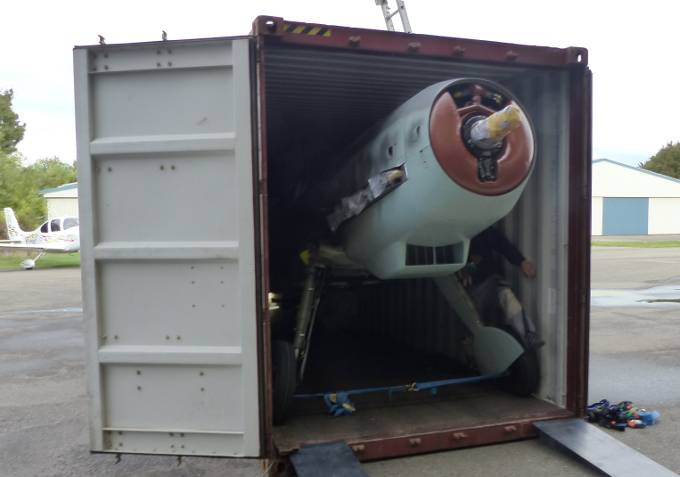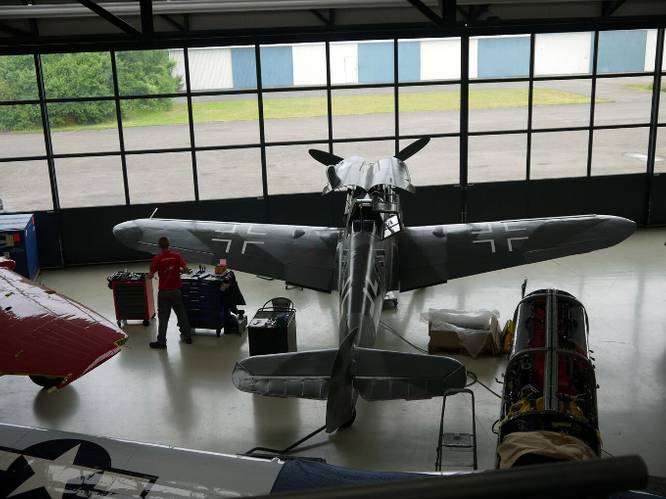Chicago Express brings vintage Messerschmitt to the U.S.
Container shipper Hapag-Lloyd has transported some unusual cargo from Rotterdam to Norfolk. Securely packed in a 40-foot cube container, the vintage fighter airplane, a Messerschmitt Bf 109, made the two-and-a-half-week journey across the North Atlantic.
The Messerschmitt Bf 109 is one of the roughly 33,000 units built between 1936 and 1945, making it the most manufactured fighter aircraft in military history. The single-seater is 8.95 meters long, has a wingspan of 9.91 meters and is equipped with a 12-cylinder, 1,475-horsepower Daimler-Benz engine, that offers an unthinkable cylinder capacity of 35.7 liters. At a high speed of 620 kilometers per hour, the airplane has a maximum range of 720 kilometers. According to one pilot’s calculations, the plane would have to make 10 refueling stops if it were to fly the 6,700-kilometer journey to Norfolk. But since these refueling options don’t exist on the North Atlantic the freight forwarding company STC Cargo organized the seaborne transport. .
To complete the authentic replica that was shipped to the U.S., Meier Motors, a restorer of historical airplanes based in the southwestern German town of Eschbach, had to use original blueprints and track down a number of old components. For the trip across the ocean, the shipyard removed the plane’s wings and partially disassembled its fuselage. “After that, it was relatively easy to push the plane backwards into the container and to lash it,” explained Ronald Selke, the managing director of the freight forwarding company. Only the front landing gears had to be fastened closer together with a strap because their track width of 245 centimeters was slightly too big. “But that wasn’t rocket science,” the logistic expert noted. The wings were placed in a wooden frame that Meier Motors had built specifically for this container shipment.
Handling the fighter and getting it cleared by customs also didn’t give rise to any larger problems. “Since this involved a replica, and especially an unarmed one, the airplane didn’t fall under Germany’s War Weapons Control Act,” Selke said. What’s more, the Badisches Landesmuseum, an important museum in the state of Baden-Württemberg that strictly monitors exports of German cultural artifacts, issued a clearance certificate for the replica.
In the U.S., the Messerschmitt will reportedly not only be used as a museum exhibition piece, but also go into action at flight shows. The vintage airplane already proved its airworthiness during test flights conducted in Germany.














